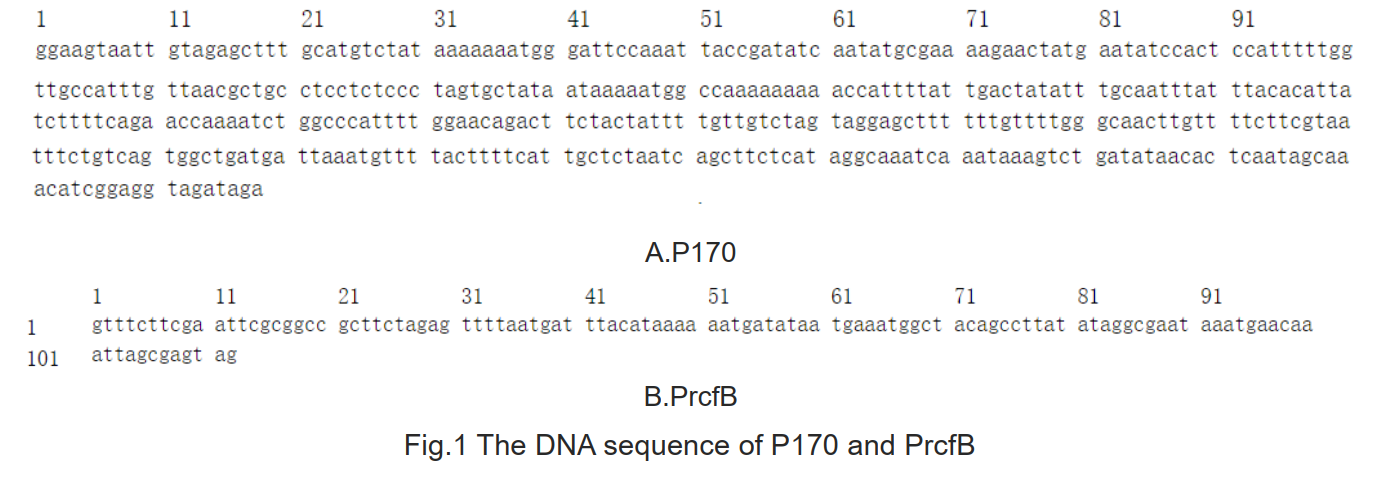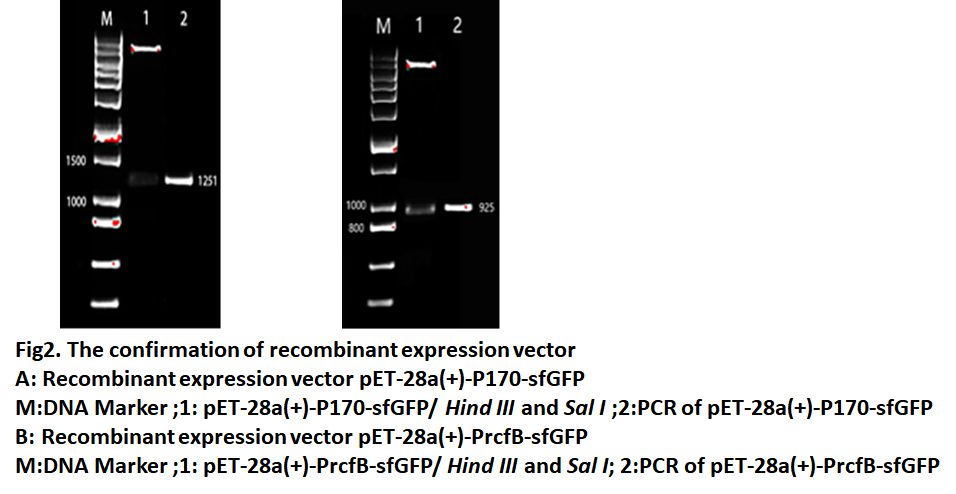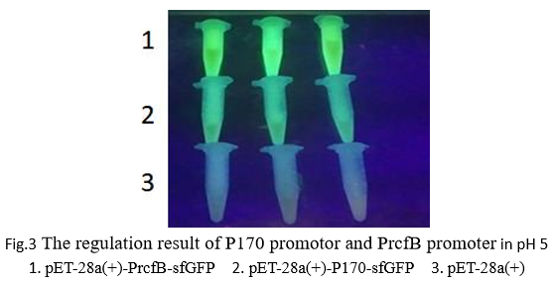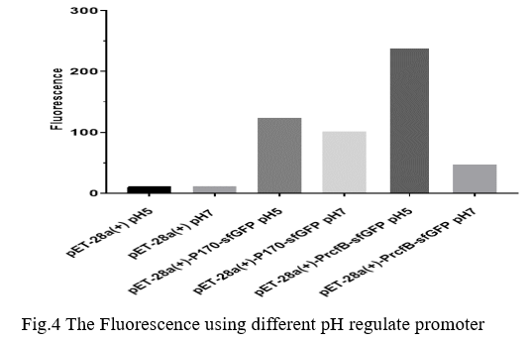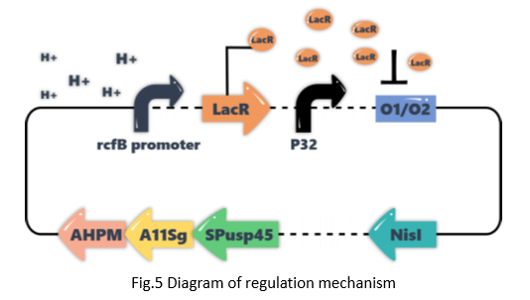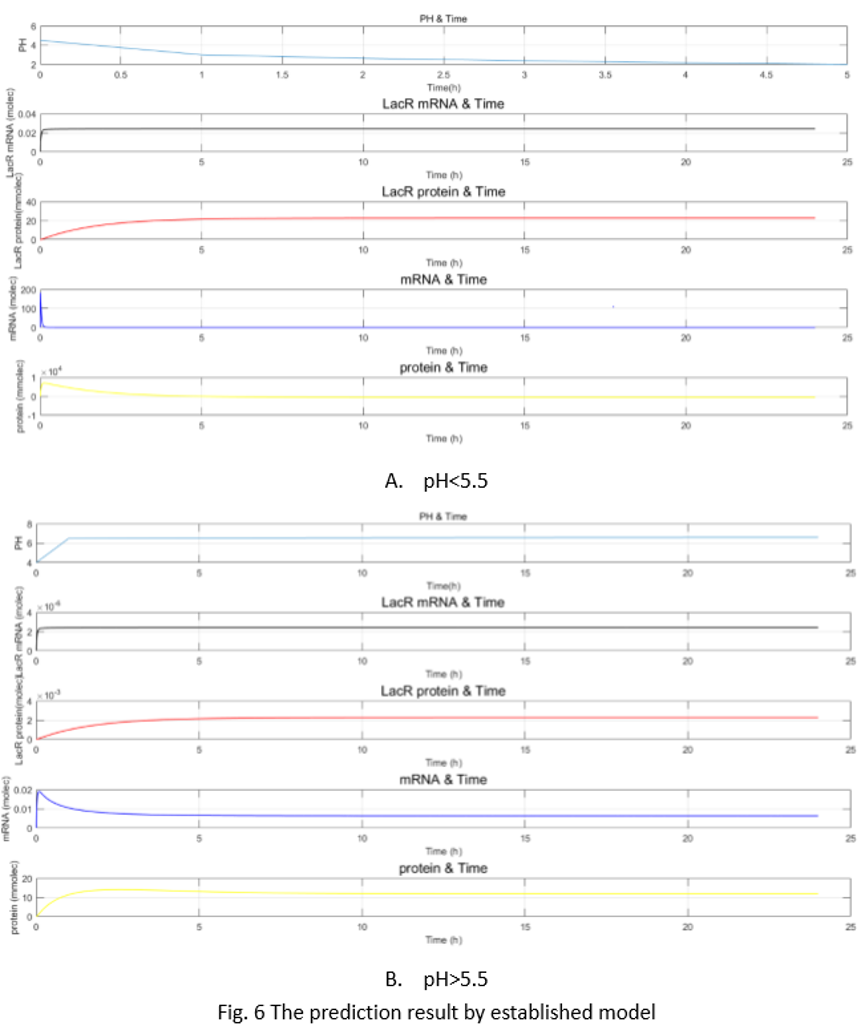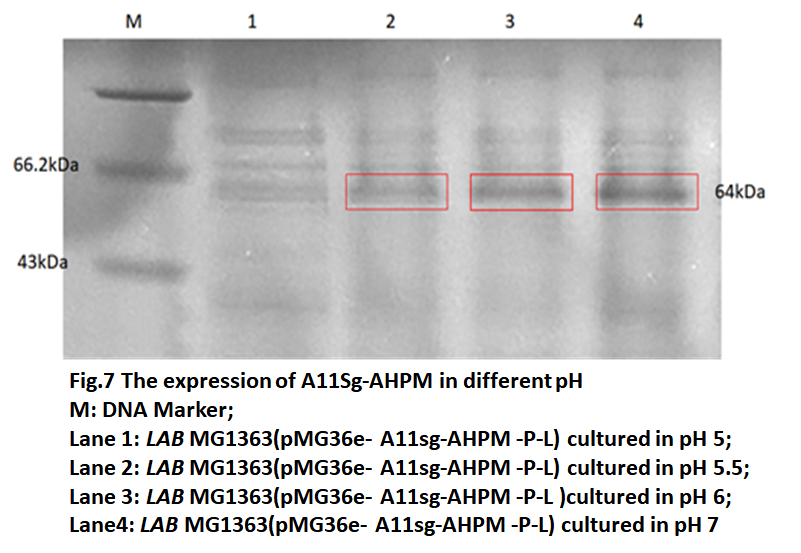Part:BBa_K3142000
Acid-induced promoter(PrcfB)
The rcfB promoter, a member of the CRP-FNR positive regulation family, was amplified from chromosomal DNA lactis subsp. lactis IL1403. It is an important part of the P170 promoter regulated by acid. When the external pH value declines to 5.5, rcfB promoter will be highly upregulated.
Sequence and Features
- 10INCOMPATIBLE WITH RFC[10]Illegal prefix found in sequence at 9
- 12INCOMPATIBLE WITH RFC[12]Illegal EcoRI site found at 9
Illegal NotI site found at 15 - 21INCOMPATIBLE WITH RFC[21]Illegal EcoRI site found at 9
- 23INCOMPATIBLE WITH RFC[23]Illegal prefix found in sequence at 9
- 25INCOMPATIBLE WITH RFC[25]Illegal prefix found in sequence at 9
Illegal XbaI site found at 24 - 1000COMPATIBLE WITH RFC[1000]
SZPT-China
Improving the documented sequence
In 2015, TJU-China team submitted P170 Promoter (BBa_K1696005) which is regulated by the pH. When pH is between 6.0 and 6.5, it will be turned on and have the highest transcription efficiency. Conversely, when pH is neutral or alkaline, the expression efficiency will be lower. But it’s a pity that there was no validation data in the project of TJU-China team. Otherwise, we want to use pH-regulated promoter in our project this year. However, in our project, the promoter regulated by lower pH than 6.0 is necessary. So, we used the modified promoter PrcfB(BBa_K3142000) in our project. Fig.1 are the DNA sequence of P170 (418bp) and PrcfB(112bp). Meanwhile,we perform fluorescence quantitative verification and protein expression.
Verification by Fluorescence assay
First, we inserted P170-sfGFP and PrcfB-sfGFP into the E. coli expression vector pET-28a(+) respectively. Fig.2 showed that the PrcfB-sfGFP with size 1251bp and PrcfB-sfGFP with size 925bp was cloned to pET-28a(+) vector successfully.
Then the recombinant vector transformed it into E. coli BL21. BL21,BL21 transferred with pET-28a(+)-P170-sfGFP and BL21 transferred with pET-28a(+)-PrcfB-sfGFP were inoculated in LB medium with pH 5 respectively. After Incubate for 18 h at 37 ° C. The bacterium was placed under UV light to excite GFP. The results are shown in the Fig.3. It can be seen that in pH 5, the fluorescence using PrcfB is stronger than P170.
For a better comparison the regulation between PrcfB and P170, BL21,BL21 transferred with pET-28a(+)-P170-sfGFP and BL21 transferred with pET-28a(+)-PrcfB-sfGFP were inoculated in LB medium with pH 5 and pH 7 respectively. we measured the Fluorescence intensity using Fluorescence detection microplate reader. The result is showed in Fig.4.The result showed that in pH 5, the fluorescence intensity using improved prompter PrcfB is 239.78 and using unmodified promoter P170 is 123.693. while in pH 7, the fluorescence intensity using PrcfB is 46.637 and using P170 is 101.407. This indicated that our improved PrcfB can be regulated by lower pH.
Verification by A11Sg-AHPMprotein expression
First, we constructed a vector that regulates the expression of a protein of interest through the PrcfB promoter. The vector has the characteristic that when the pH is less than 5.5, the PrcfB promoter strongly expresses the LacR, and the LacR binds to the O1/O2 site to repress the production of the target protein. When the pH is greater than 5.5, the PrcfB promoter is weakly expressed, and the protein of interest can be expressed without being repressed. Fig.5 shows the regulation mechanism.
Model
In order to know if PrcfB promotor can work Lactococcus lactis MG1363, We established a model of pH-induced promoter regulation on the target protein of Lactococcus lactis MG1363. Then, we performed numerical simulations on the model and sensitivity analysis on some key parameters. The results of this model are shown in Fig.6
According to the model, when the pH was less than 5.5, the expression protein of the Lactococcus lactis MG1363 was inhibited after 4 hours. It means that during the fermentation of lactic acid bacteria, when the pH of the external environment drops below 5.5, the expression of the target protein will be inhibited after 4 hours. It is beneficial to reduce the energy consumption of the bacteria, and is beneficial to increase the expression of our target protein in the intestinal tract. When the pH of the external environment rises above 5.5, the expression of the target protein can be observed after about 2 hours, and the expression rate is relatively stable. It indicates that the corresponding protein of interest will be expressed by lactic acid bacteria two hours after it is colonized into the intestine.
The regulation of PrcfB in A11sg-AHPM protein
From our model, we predicted that the vector containing the PrcfB promoter could express our target protein at pH above 5.5, and could not express our target protein at pH less than 5.5. According to our established model, we inoculated Lactococcus lactis containing the vector into GM17 medium at pH 5, pH 5.5, PH 6, and pH 7 for 30 hours, then collected the cells and verified by SDS-PAGE. Fig.7 is the expression result.
The results showed when the pH is less than 5.5, PrcfB initiate the expression of LacR, the which bind to O1/O2, then depressed the expression of A11Sg-AHPM. When pH≥5.5, the PrcfB is turned off and the expression of LacR decrease, the expression of A11Sg-AHPM is initiated and the expression level increases along with the increase of pH. All the experimental results above show that the codons are successfully optimized, the length of the sequence is reduced, and the function of the components is improved. This will facilitate the team that will use this component to regulate at low pH in the future.
Reference:
- Madsen S M, Arnau J, Vrang A, et al. Molecular characterization of the pH-inducible and growth phase-dependent promoter P170 of Lactococcus lactis. Molecular Microbiology, 1999, 32(1):75-87.
- Søren M. Madsen, Thomas Hindré, Jean-Paul Le Pennec, et al. Two acid-inducible promoters from Lactococcus lactis require the cis-acting ACiD-box and the transcription regulator RcfB. Molecular Microbiology, 2005, 56(3):735-746.
- Ismail AKYOL, Ugur COMLEKCIOGLU, Asuman KARAKAS, Kalbiye SERDAROGLU, Mehmet Sait EKINCI, Emin OZKOSE. Regulation of the acid inducible rcfB promoter in Lactococcus lactis subsp. Lactis. Annals of Microbiology, 2008, 58 (2) 269-273.
| None |

